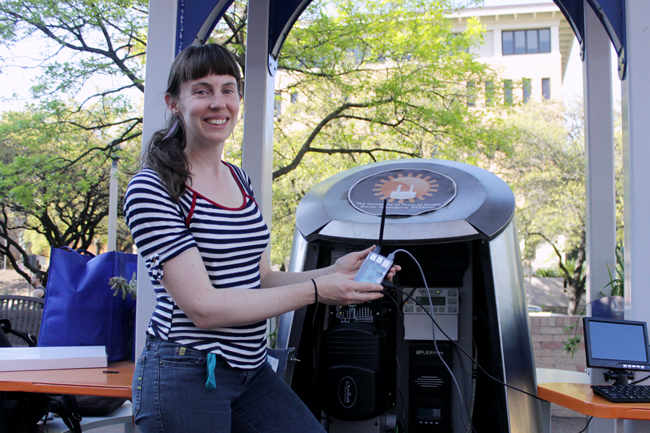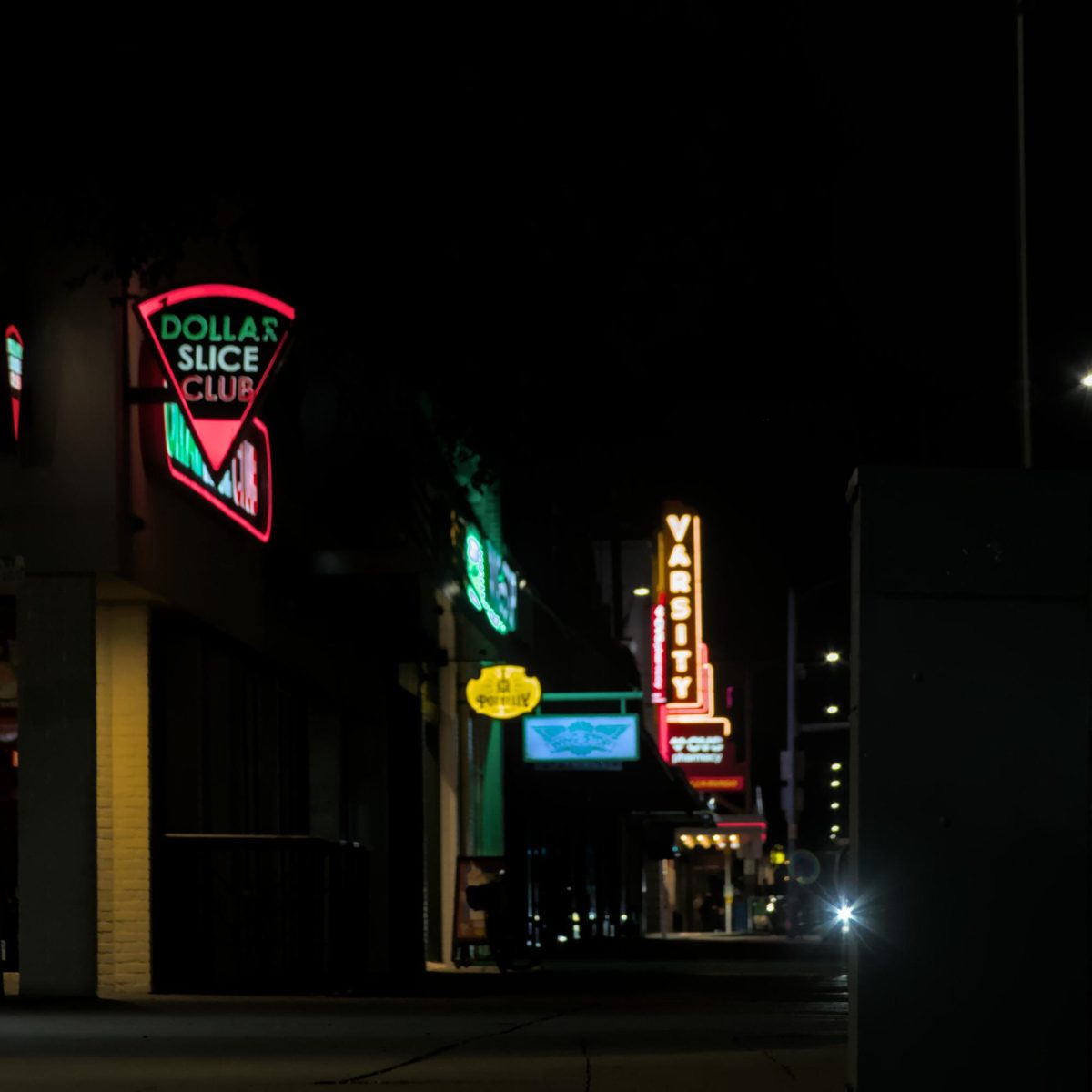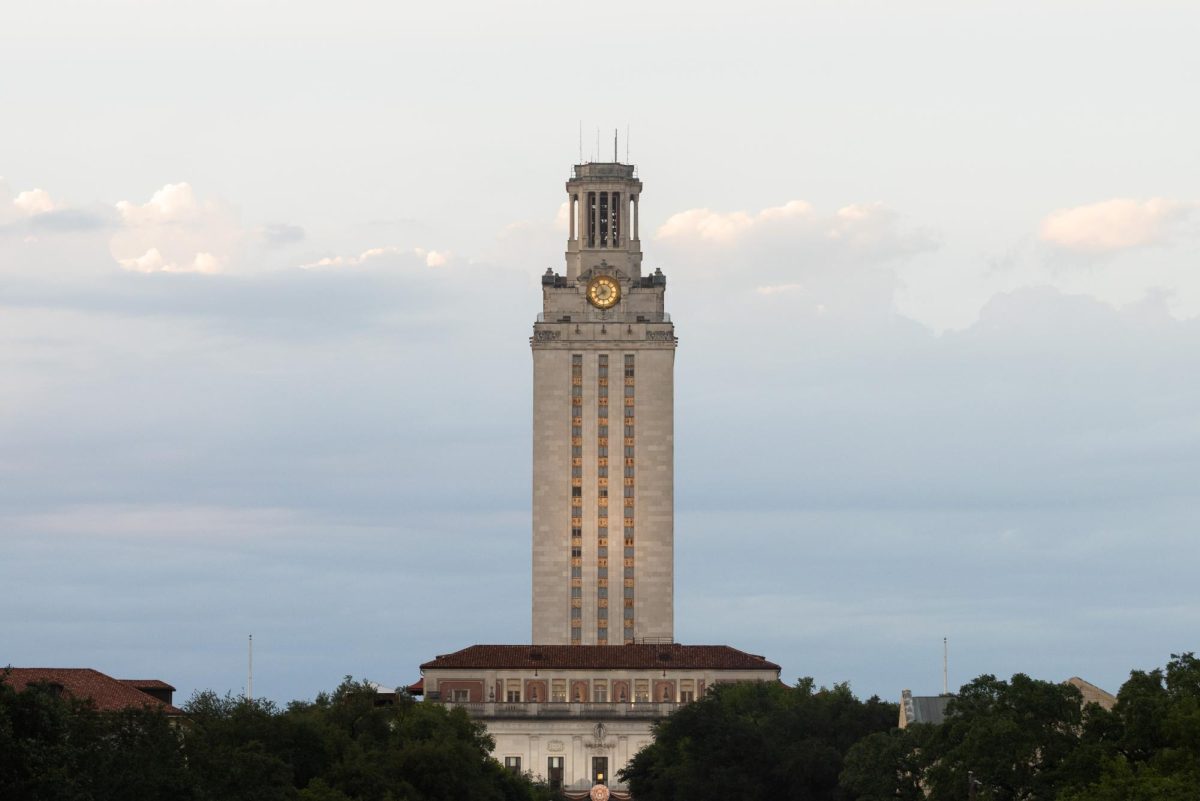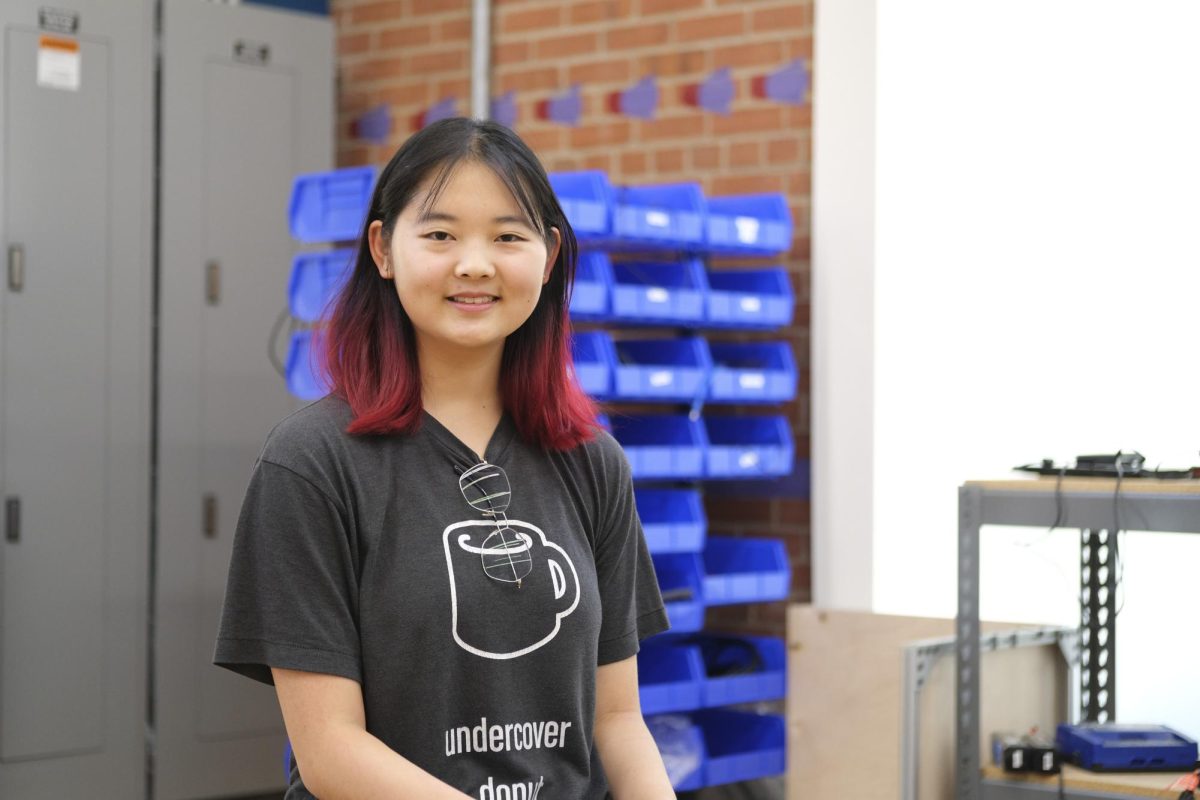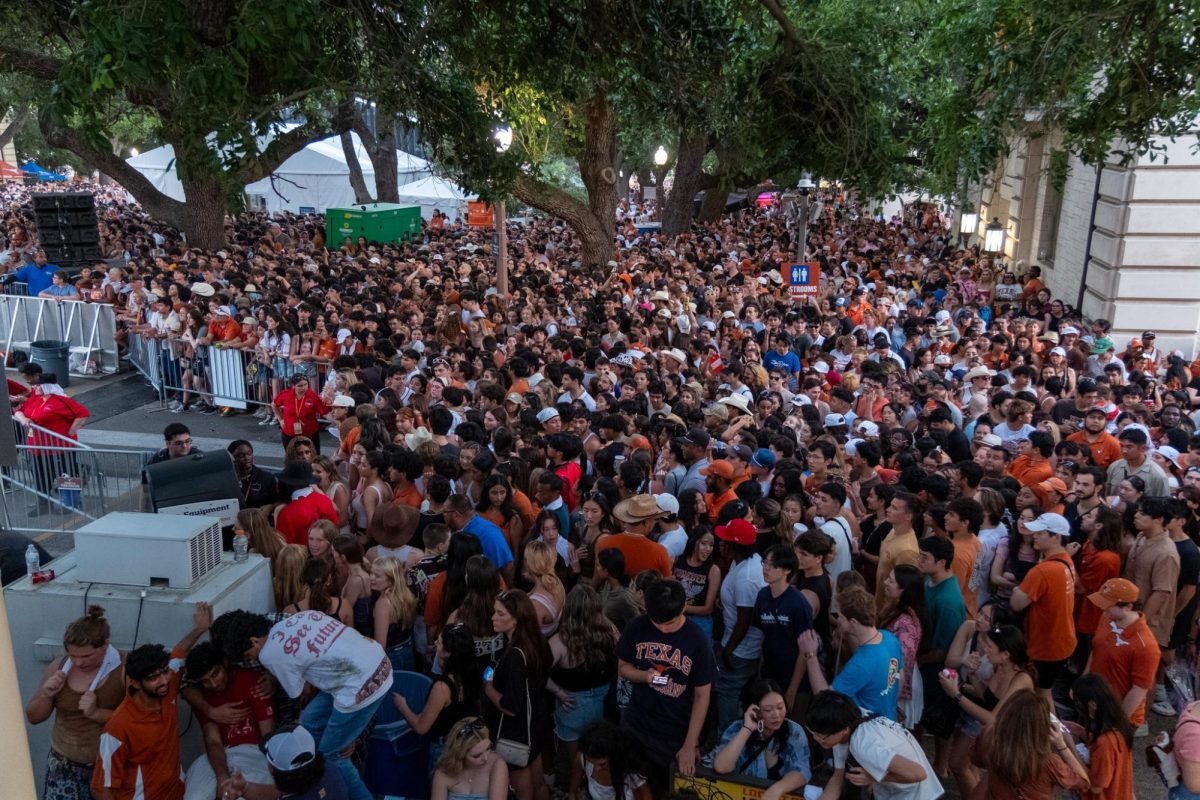Students may soon have a website to learn about how much energy the solar charging stations on campus produce, store and distribute. Sol Design Lab, which works to design energy-efficient products, designed the two solar charging stations already on campus and is working to create software to collect and communicate data about the stations.
Beth Ferguson, visiting research scholar and CEO of Sol Design Lab, spoke with students Friday about the prospect of having new solar charging stations on campus. The new stations would boast several improvements, including a more affordable design and an app or digital screen that displays how much solar energy the station produces and devices use.
The two charging stations on campus are located at the intersection of 23rd Street and San Jacinto Boulevard and on the Perry-Castañeda Library Plaza.
UT is one of the first schools to harness solar energy as a way for students to charge their personal portable devices. Ferguson, a UT alumna, said other universities have made attempts to do the same, but on a smaller scale.
“There’s probably little, small, off-the-grid solar projects, but definitely the biggest charging stations are here at UT-Austin,” Ferguson said. “There’s a couple companies that have solar umbrellas that are more portable, so I think this is one of the bigger systems.”
Since last summer, Ferguson has been collecting data showing how much sunlight the current stations absorb and produce. She will present the data in hopes of convincing the Green Fee Committee, which allocates funds for campus environmental projects, to continue funding the project so the data can be readily available to students and researchers.
Ferguson said the main challenge when trying to build a solar charging station is finding a location, since shaded areas hinder the production of solar energy.
“[We use] a solar pathfinder,” Ferguson said. “It’s a little, sort of plexiglass bubble calendar where you can chart where shade obstacles are. We had students from our workshops walk around the campus and find the sunniest locations.”
Biology sophomore Victor Lam said the solar charging stations have been beneficial, especially during on-campus events that attract large crowds.
“During one of the football games where we went out to the stations, we had chargers and everything, and I felt like a good number of people needed to charge their phones,” Lam said.
Lam said it would be worth finding additional location for students to charge their laptops while studying.
Ferguson said one of the proposed locations for a new station would be in the West Mall in front of the Union, which would provide solar charging for a larger amount of students.
Biology junior Albert Lee, associate comics editor for The Daily Texan, said not many students use the charging stations but believes having them is an important step to reaching larger energy-conserving goals.
“In the end, it depends on what else we could do with the solar power besides charging,” Lee said. “Some people try to charge their cars, the big devices, and that’s not what these machines can do.”
Although the charging stations have limitations, Ferguson said they have opened other doors in the world of energy-efficient technology simply by their presence on campus.
“I’m working with a vehicle share system of scooters, similar to the bike share fleet, that wants a charging station,” Ferguson said. “I’ll be working on that this summer, coming up with a station like this one. All this research has been really helpful for future collaborations that Sol Design Lab is doing.”
An earlier version of this article contained several factual errors. It has since been updated.



